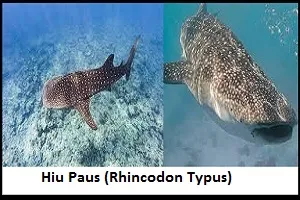Rhincodon typus, commonly known as the Whale Shark, is one of the most awe-inspiring creatures in the ocean. Recognized as the largest fish species still living on our planet, whale sharks possess an undeniable allure for researchers and nature enthusiasts alike. In this article, we will delve into the life and unique characteristics of Rhincodon typus.
Appearance and Size
Whale sharks are a species of fish characterized by their distinct appearance, typically sporting dark grey or blue coloration with white or grey spots. They can reach lengths of over 12 meters, making them one of the largest fish in the world. Their weight can exceed 20 tons.
Habitat and Behavior
Whale sharks are typically found in warm waters across the globe, particularly in tropical and subtropical regions. They often migrate to areas rich in plankton, their primary food source. Despite their large size and potentially intimidating appearance, whale sharks are gentle creatures and pose no threat to humans. They tend to be shy and peaceful, often seen swimming leisurely in open waters.
Diet and Feeding Behavior
Their diet primarily consists of plankton, krill, and other small fish. They utilize a specialized structure called a filter feeder to strain food from the water. This filter-feeding mechanism allows whale sharks to efficiently sieve food from the water with gentle movements, yielding a large volume of sustenance.
Conservation and Threats
Although whale sharks are renowned for their size and strength, they remain vulnerable to human threats. One of the major threats to whale shark populations is unsustainable fishing practices, particularly driven by the demand for shark fin used in shark fin soup, a delicacy in Asian cuisine. Unsustainable fishing practices, as well as habitat degradation and marine pollution, further exacerbate the conservation status of whale sharks.
Conservation Efforts and Research
Various conservation efforts have been undertaken to protect whale sharks from looming threats. Many countries and conservation organizations have introduced laws and regulations to safeguard whale sharks, including bans on fishing and restrictions on the trade of whale shark-related products.
Scientists continue to conduct research to gain deeper insights into the life and behavior of whale sharks. This research includes monitoring migrations, employing satellite tracking technology, and genetic analysis to aid in the protection of this species and its habitat.
Facts about whale sharks
Here are some facts about whale sharks, among others:
1. Largest Fish
Whale sharks hold the title for being the largest fish species on Earth, with some individuals reaching lengths exceeding 12 meters (40 feet).
2. Filter Feeders
Despite their immense size, whale sharks are filter feeders, primarily consuming plankton, small fish, and krill. They use their specialized filter-feeding apparatus to strain food from the water.
3. Global Distribution
These gentle giants are found in tropical and subtropical waters around the world, often congregating in areas rich in food sources such as plankton blooms.
4. Peaceful Nature
Whale sharks are known for their calm and non-threatening behavior towards humans. They are often observed swimming gracefully in open waters, providing opportunities for eco-tourism and research.
5. Endangered Status
Despite their peaceful nature, whale sharks face threats from habitat degradation, marine pollution, and unsustainable fishing practices. Conservation efforts are crucial to protect their dwindling populations.
6. Long Lifespan
While exact lifespans are difficult to determine, researchers estimate that whale sharks can live for several decades. However, their slow reproductive rate makes them particularly vulnerable to population declines.
7. Unique Spot Patterns
Each whale shark has a unique pattern of spots and stripes on its skin, similar to a fingerprint. Scientists use these distinctive markings for individual identification and tracking purposes.
8. Migration Patterns
Whale sharks are known to undertake long-distance migrations, traveling thousands of kilometers across oceans in search of food and suitable breeding grounds.
9. Protected Species
Many countries have enacted laws and regulations to protect whale sharks, including bans on fishing and trade. International collaborations are also underway to conserve these magnificent creatures.
10. Research and Conservation
Ongoing research efforts aim to better understand the biology, behavior, and ecological roles of whale sharks. Conservation initiatives focus on mitigating threats and promoting sustainable practices to ensure the long-term survival of this iconic species.
Conclusion
Rhincodon typus, or the whale shark, is a creature of inspiration and wonder. With its remarkable size and peaceful demeanor, the whale shark stands as a symbol of the marvels of the marine world that need to be preserved and protected. Through sustainable conservation efforts and ongoing scientific research, we can ensure that whale sharks remain an indispensable part of our oceanic ecosystem for generations to come.
That is the article entitled Rhincodon Typus: Unveiling the Mysteries of the World's Largest Whale Shark. If there are any deficiencies or errors in writing this article, the Pustaka Pengetahuan expresses its deepest apologies. Please leave a wise message in the comments column provided. Thank you for visiting, hopefully it's useful.
Other reading materials, can help with school assignments, click Berbagai Reviews
To increase insight and knowledge, please click Baraja Farm
For tutorial on how to cultivate, please click Baraja Farm Channel
Social media please click facebook

Tidak ada komentar:
Posting Komentar